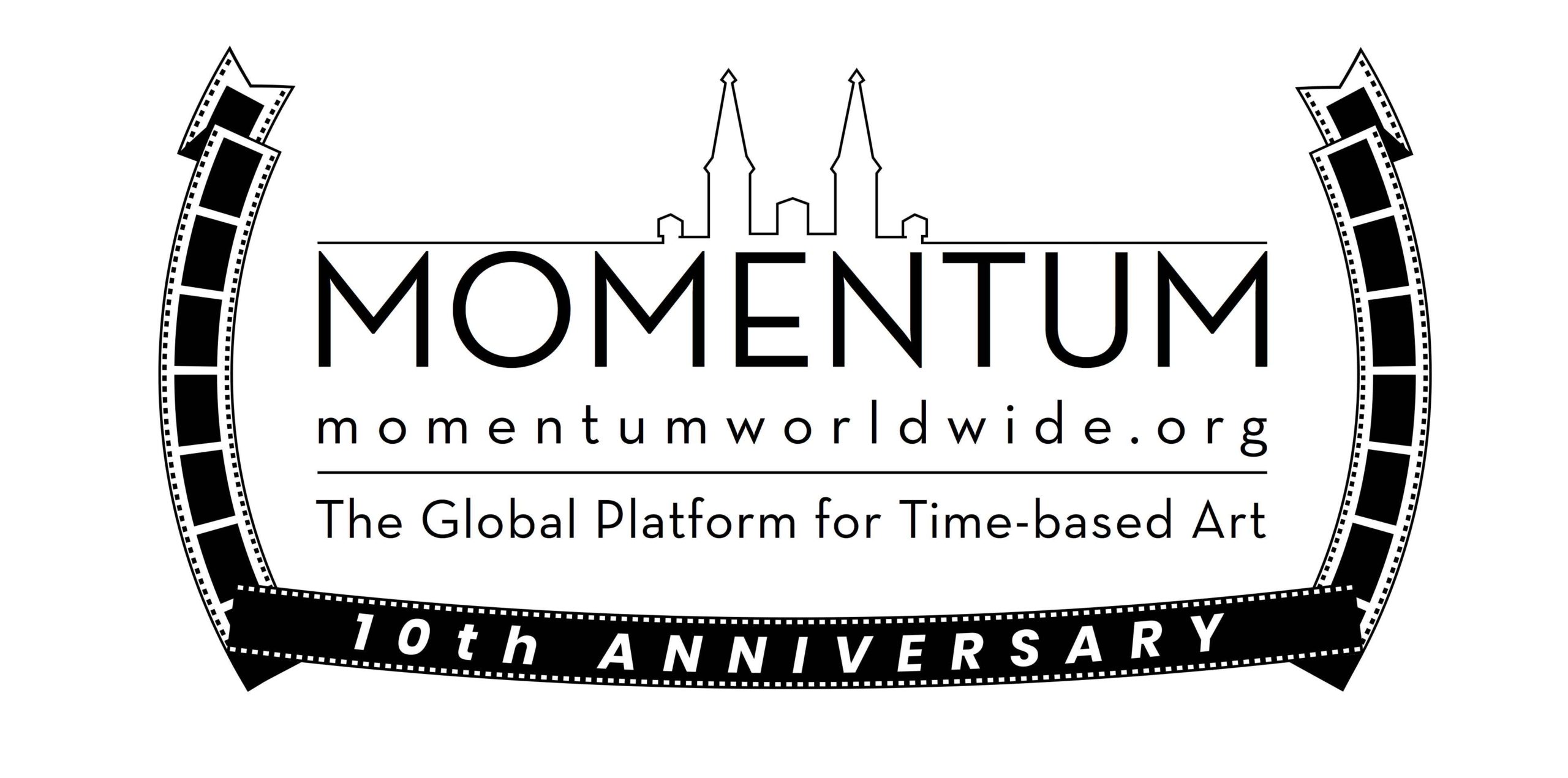
The Conclusion of MOMENTUM’s 10th Anniversary Program
STATES of EMERGENCY
ONLINE EXHIBITION ON

WATCH STATES of EMERGENCY on ikonoTV > >
11 DECEMBER 2021 – EXTENDED
Featuring:
Iván Buenader (AR)
Nezaket Ekici (TR/DE)
Doug Fishbone (US/UK)
Hannu Karjalainen (FI)
Shahar Marcus (IL)
Christian Niccoli (IT)
Nina E. Schönefeld (DE)
Curated by Rachel Rits-Volloch & Emilio Rapanà
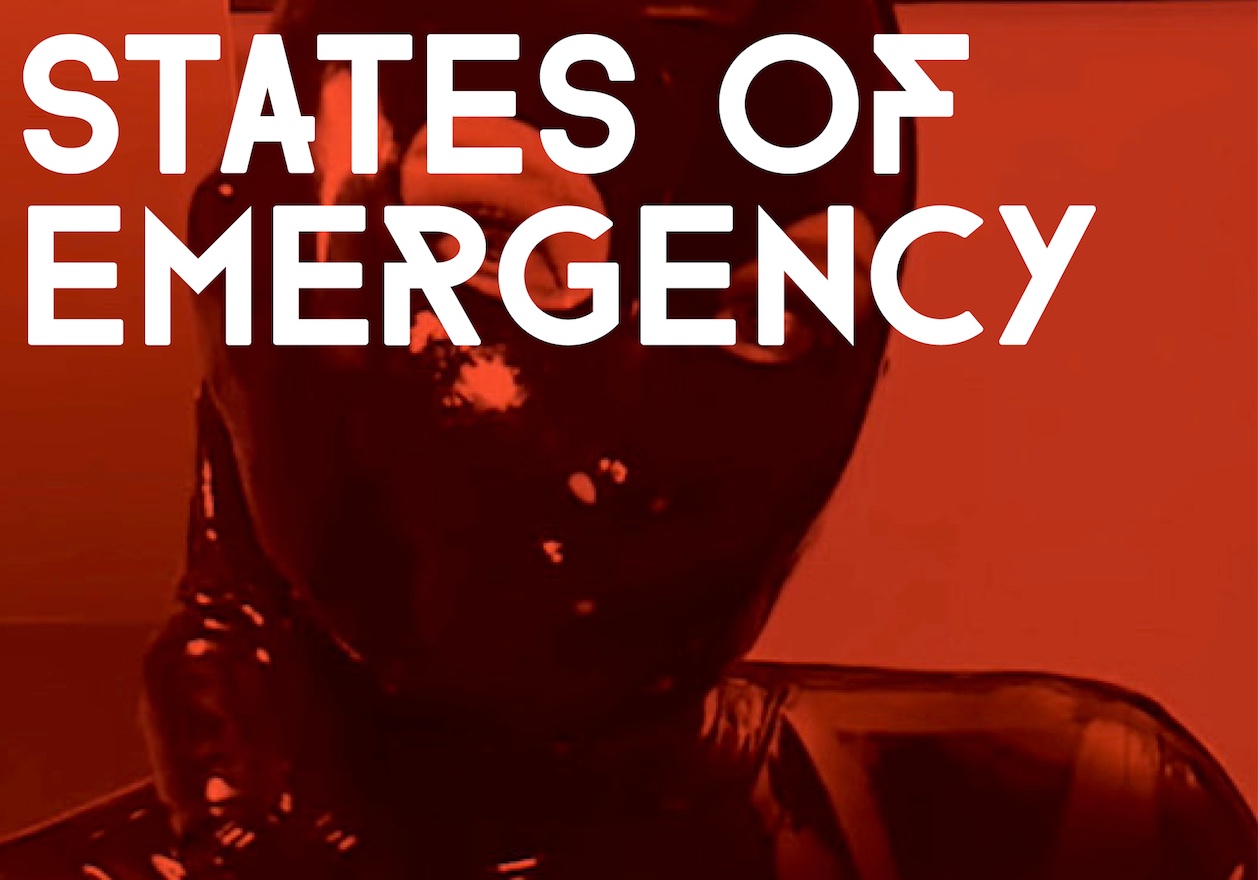
When we made the title for this exhibition, we had no idea just how sadly prophetic it would prove. STATES of EMERGENCY takes place amidst the Russian invasion of Ukraine and the outbreak of war closer to home than any of us could previously imagine. Our hearts go out to our friends, families, and colleagues in Ukraine and all those in Russia hoping for peace, who never wanted this tragic war. During these turbulent times, MOMENTUM extends STATES of EMERGENCY until peace is restored in the Ukraine.
The COVID pandemic appears to be here to stay. As we learn how to navigate this new pandemic reality amidst the ongoing chaos of (mis)information and mixed messages, we turn to one another for guidance. Artists – as cultural first-responders – are at the forefront of translating the felt experience of this time of emergency into visual languages, making sense of our precarious times. STATES of EMERGENCY asks: What will emerge out of this global emergency?; While doctors and scientists race to heal our bodies, what will it take to heal the cultural aftermath of COVID?; What is the role of the artist in a state of emergency?
Featuring new works by artists from the MOMENTUM Collection, STATES of EMERGENCY compiles their responses to a decade of global environmental and political crisis: particularly to the current pandemic emergency which has transformed the lives of many billions of people. STATES of EMERGENCY, the exhibition marking the end of MOMENTUM’s 10th Anniversary program, is a sequel to COVIDecameron, our ongoing online exhibition of video art curated during the first pandemic lockdown, re-contextualizing existing works in the MOMENTUM Collection. STATES of EMERGENCY, however, brings together entirely new works, made since the start of the pandemic, reflecting directly on the catastrophes of our times and the far-ranging impacts of COVID-19 and its aftermath from socio-economic, environmental, political, global, and personal points of view.
In an era of seemingly endless calamities – pandemics, global warming, political upheavals – life is becoming increasingly cinematic, as the fictions of the screen blur into the realities of the daily news. Disaster scenarios of disease, natural catastrophe, rising sea levels, terrorist attacks, threats of war; is it Hollywood or CNN? Is art mirroring life or vise versa?
While many struggle to survive in these pandemic times, we, the fortunate, surf. We surf the web, the slipstream, the information age. We zoom through meetings, weddings, and funerals. We are constantly connected via smartphones iPads and apps; inundated with images, texts, and tweets; relentlessly bombarded with events, offers and updates; confronted with a barrage of news – real, fake, and somewhere in between. (Mis)information flows more virally than disease. And, confined during the recurrent lockdowns and travel restrictions, we are required to blur the line between real space and cyberspace, living increasingly virtual lives. In this era of ongoing travel restrictions, it is good to remember that moving images move us – art is a way of experiencing the world without physically moving through it.
The STATES of EMERGENCY online exhibition on ikonoTV runs in parallel with the extended gallery exhibition at MOMENTUM, and is part of the Birds & Bicycles program.
Click HERE for the STATES of EMERGENCY Gallery Exhibition > >
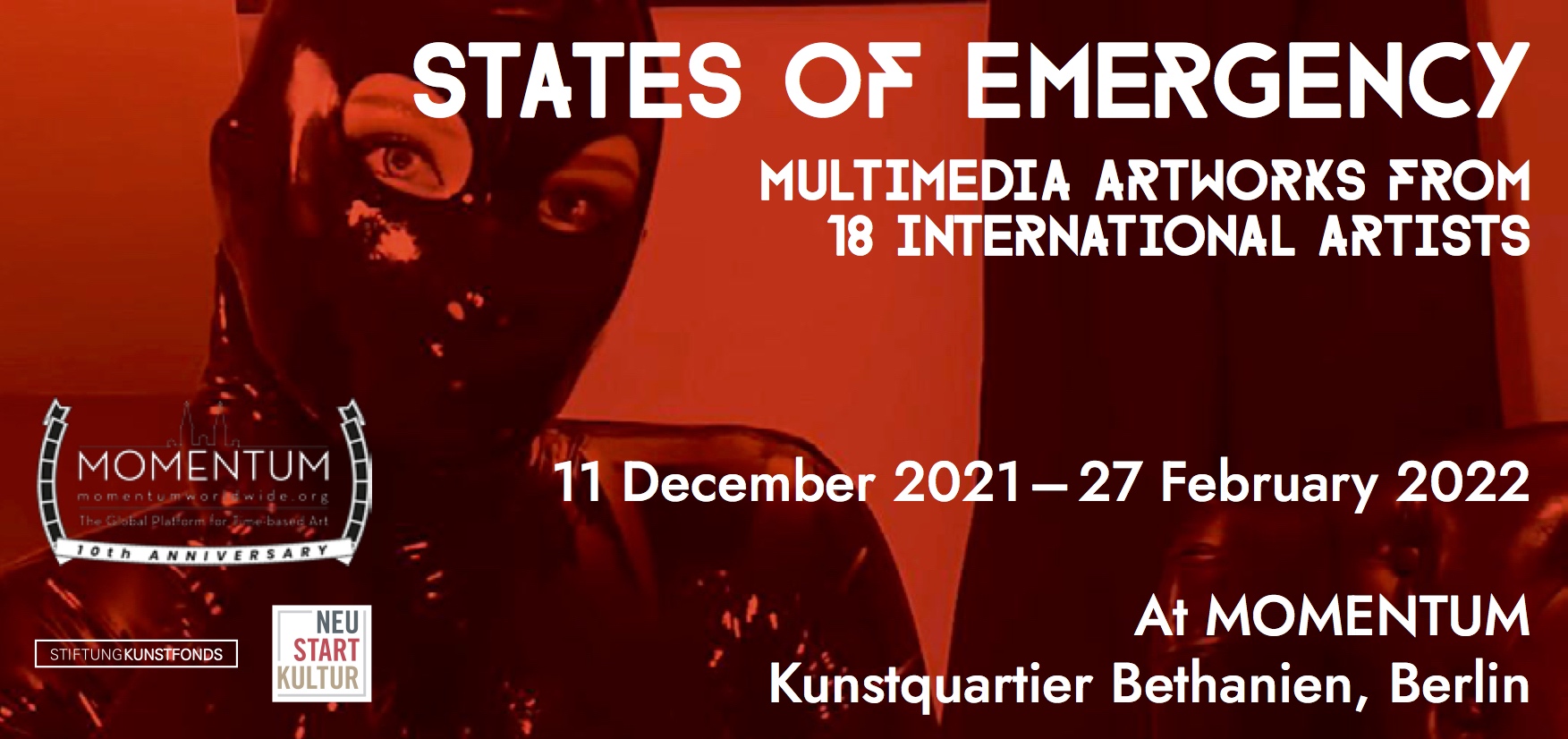
[Click on the name of each artist to see the bio and the work description below.]
Iván Buenader
Nezaket Ekici
Doug Fishbone
Hannu Karjalainen
Shahar Marcus
Christian Niccoli
Nina E. Schönefeld
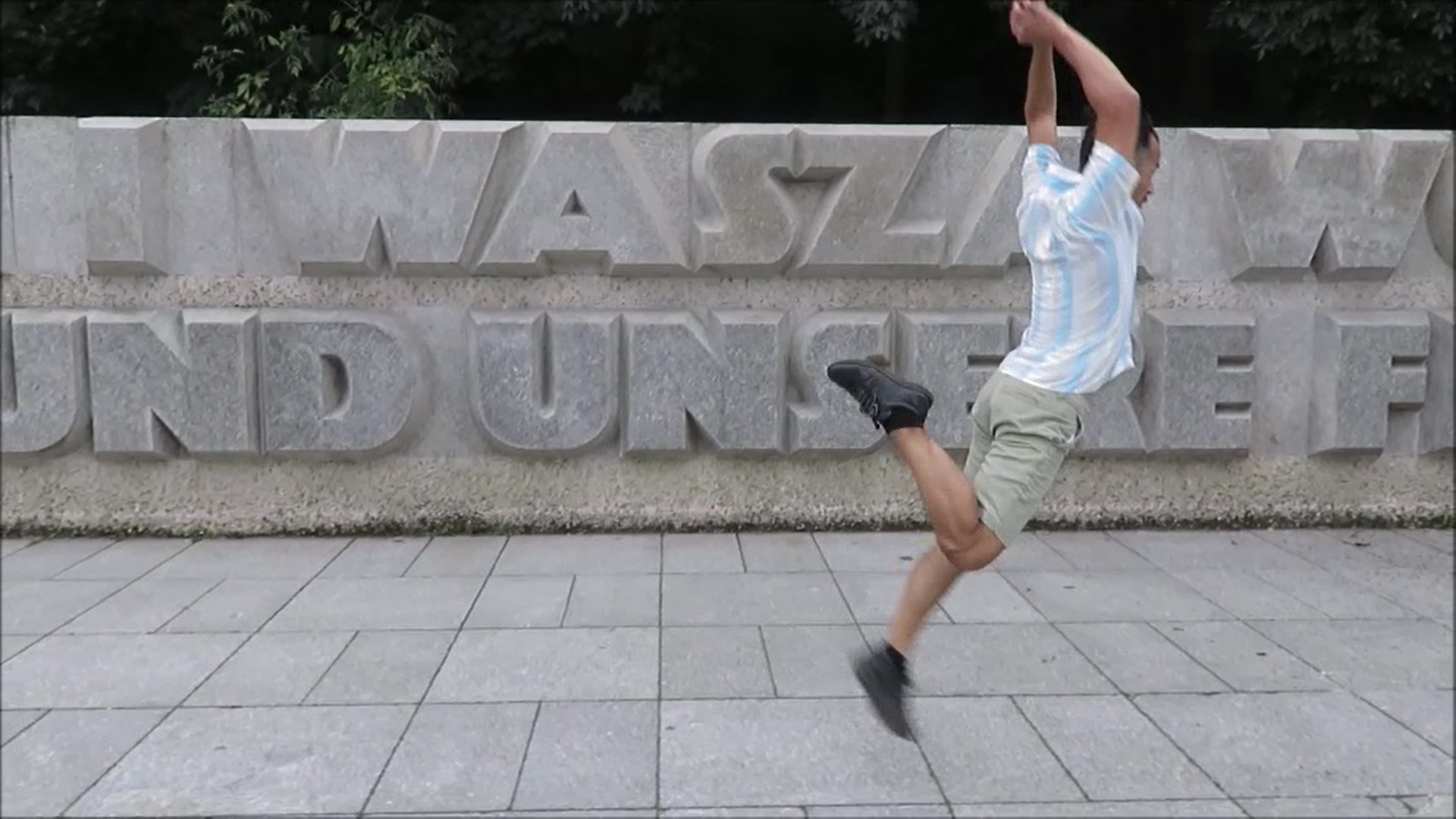
|
Volkspark (2021), video performance, 3’ Iván Buenader’s video performance, Volkspark, is the latest in a series of impromptu dance performances enacted within the context of every Artist Residency in which he participates. In this case, the work results from his 3-month Residency at MOMENTUM AiR during the summer and autumn of 2021 – a period of cautiously hopeful ‘normality’ in a city still learning to cope with the ongoing aftermath of the pandemic. Buenader is not a dancer. His dance series is not intended as a performance of technical competence, but rather, as his way of experientially engaging with every Residency location by means of mapping the movements of his body onto that space – be it a studio, cityscape, or countryside. The very act of movement through space connotes a freedom of which many were deprived during the long months of pandemic lockdown. While the title of the chosen soundtrack to this performance – “(I just don’t wanna) Miss A Thing” by Kylie Minogue – evokes the thirst for actual experience after months of isolation, coupled with the artist’s journey of discovery through Berlin’s multifaceted cityscape. In Volkspark (meaning People’s Park in German), Buenader dances through Berlin’s oldest public park: Volkspark Friedrichshain. Dressed in clothes found on the streets – the literal social fabric of Berlin – he moves amidst various monuments inscribed with references to battles, conquests, nations, historical milestones, popular mythologies, and literary characters of children’s fables (the Fountain of Fairy Tales; the Berlin Bear; statues of Frederick the Great, the Javelin Thrower, and Mother and Child; Memorials for German fighters in the Spanish Civil War, and for Polish soldiers and anti-fascist Germans in WWII; and stairs on the hill covering the remains of one of several WWII bunkers and flak towers still inscribed within the fabric of the cityscape). “The remains that are hidden and lie buried under the appearance of a hill, as well as the static, immovable, inert sculptures that function as tributes to powerful entities or to people who gave their lives, voluntarily or involuntarily, to defend historical or temporal community values, they play a symbolic game with the living, mobile, restless body, which teaches freedom as it orbits around these monoliths, calling for a re-interpretation of memory.” – Iván Buenader |
Iván Buenader (b. 1972 in Buenos Aires, Argentina. Lives and works in Alicante, Spain and Mexico City, Mexico). Iván Buenader is an Argentinian writer and visual artist based between Alicante and Mexico City. He graduated in Computer Science from the University of Buenos Aires. He has exhibited his work (painting, photography, video, installation) in contemporary art venues in Latin America, the United States, Canada, India and Europe, while participating in numerous artist residencies – including MOMENTUM AiR in August – November 2021. He has conceptualized and produced collective interdisciplinary projects including poetry, music, dance and performance (‘CFW Poet Agency’). He is author of 11 novels and 6 books of experimental poetry. |
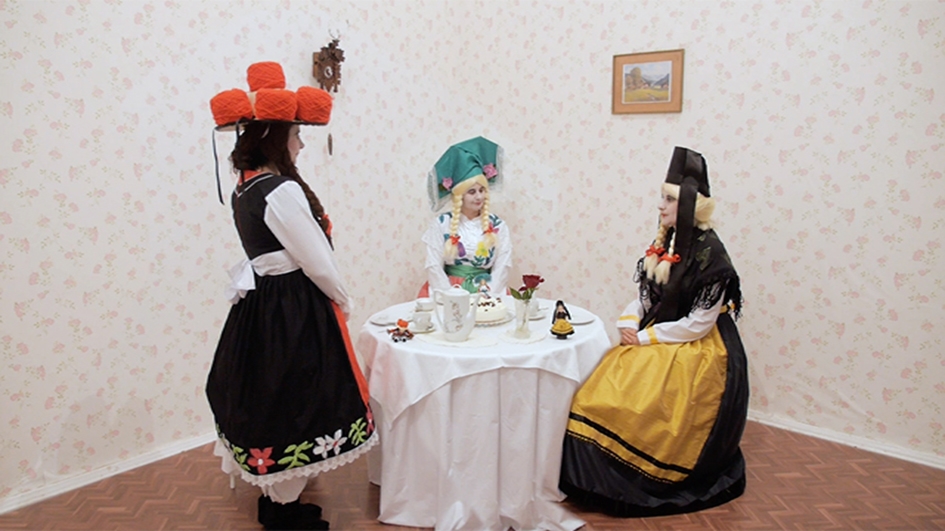
|
Kaffeeklatsch (2019/2020), Video Performance, HD, 6’17”, on loan from the artist In her video performance and accompanying discussion series Kaffeeklatsch, Nezaket Ekici refers to the German afternoon ritual of ‘coffee and cake’, a time of meeting and togetherness for many German families. The history of coffee gossip is a long one. In Germany in the 16th and 17th centuries, with the rise of the bourgeoisie, women began meeting for coffee gossip – “Kränzchen” – to exchange ideas among themselves, allowing them a taste of freedoms that up until then had been reserved for men in social circles. Nezaket Ekici addresses the tradition of the coffee klatsch from her perspective as a migrant and a fully integrated German, questioning her sense of belonging in German society. She asks herself what her own German tradition is – which leads to the general question of what actually is German tradition? In order to answer these questions, Ekici stages herself as three characters dressed in traditional German costumes from the Black Forest, the Spreewald, and Thuringia, representing the south, the north and the center of Germany. With the focus on the articulation, gestures, and facial expressions of the performer, Ekici drinks coffee with her doppelgangers in this playful video addressing the fine line between foreignness and belonging. Watching this work now – on the cusp of the third year of social distancing and intermittent lockdowns, when we have all spent far too much time in our own company – we come to see how very precious this simple freedom is, to gather together with one another.
|
Nezaket Ekici (b. 1970 in Kirsehir, Turkey. Lives and works in Berlin & Stuttgart, Germany and Istanbul, Turkey.) Nezaket Ekici holds a degree in Fine Arts, an MA in Art Pedagogy, and an MFA degree, having studied Art History and Sculpture at the Ludwig-Maximilians-University and Fine Arts Academy Munich (1994-2000). From 2001 to 2004 she studied Performance Art under Marina Abramović at the Hochschule der Bildenden Künste Braunschweig. Ekici’s video, installations and performances are often process-based and ask viewers to derive their own emotional and intellectual interpretations. In her work, complex, often controversial topics are tackled with humor in highly aesthetic compostions. Ekici frequently uses her own Turkish origins and education as a subject of tension, pitting her background against her living environment in Germany. Cultural, geographic and individual boundaries, transgressions, gender, authorial bodies, art history, religion, culture and politics are central to Ekici’s works. By highlighting these themes in everyday life and placing them in a new context, she aims to interconnect every element to form a total work of art — a Gesamtkunstwerk. Nezaket Ekici has presented more than 250 different performances in more than 170 cities in over 60 countries on 4 continents. Selected international exhibitions since 2000 include: Museum Haus der Kunst in Munich; The Irish Museum of Modern art in Dublin; 25. May Museum Belgrade; PAC Milano; Venice Biennale; P.S.1 New York; Van Gogh Museum Amsterdam; Reina Sophia Museum, Madrid; Museum of Contemporary Art, Istanbul; The Museum of Contemporary Art Taipei/ Taiwan; Poznan Biennale; Curiciba Biennale; Tel Aviv Museum of Art; Istanbul Modern; Marta Herford; Minsheng Art Museum Shanghai; Haus am Waldsee Berlin; KunstWerke Berlin; Oslo Museum; The Contemporary Art Gallery of Georgia, Georgia National Museum, Tbilisi; Museum of Contemporary Art in Krakow, Total Museum Seoul, and many more. Ekici was an Artist-in-Residence at the Cultural Academy Tarabya, Istanbul (2013-14), was the recipient of the Rome Prize for an Artist Residency at the German Academy, Villa Massimo, Rome (in 2016-17); and participated in the Schlingensief Opera Village Residency in Burkina Faso, Africa (2021). She received the Paula Modersohn-Becker Art Award (2018), and received the Berlin Culur Senate prize for her Artist Residency at the International Studio & Curatorial Program (ISCP) in Brooklyn, New York (2020).
|
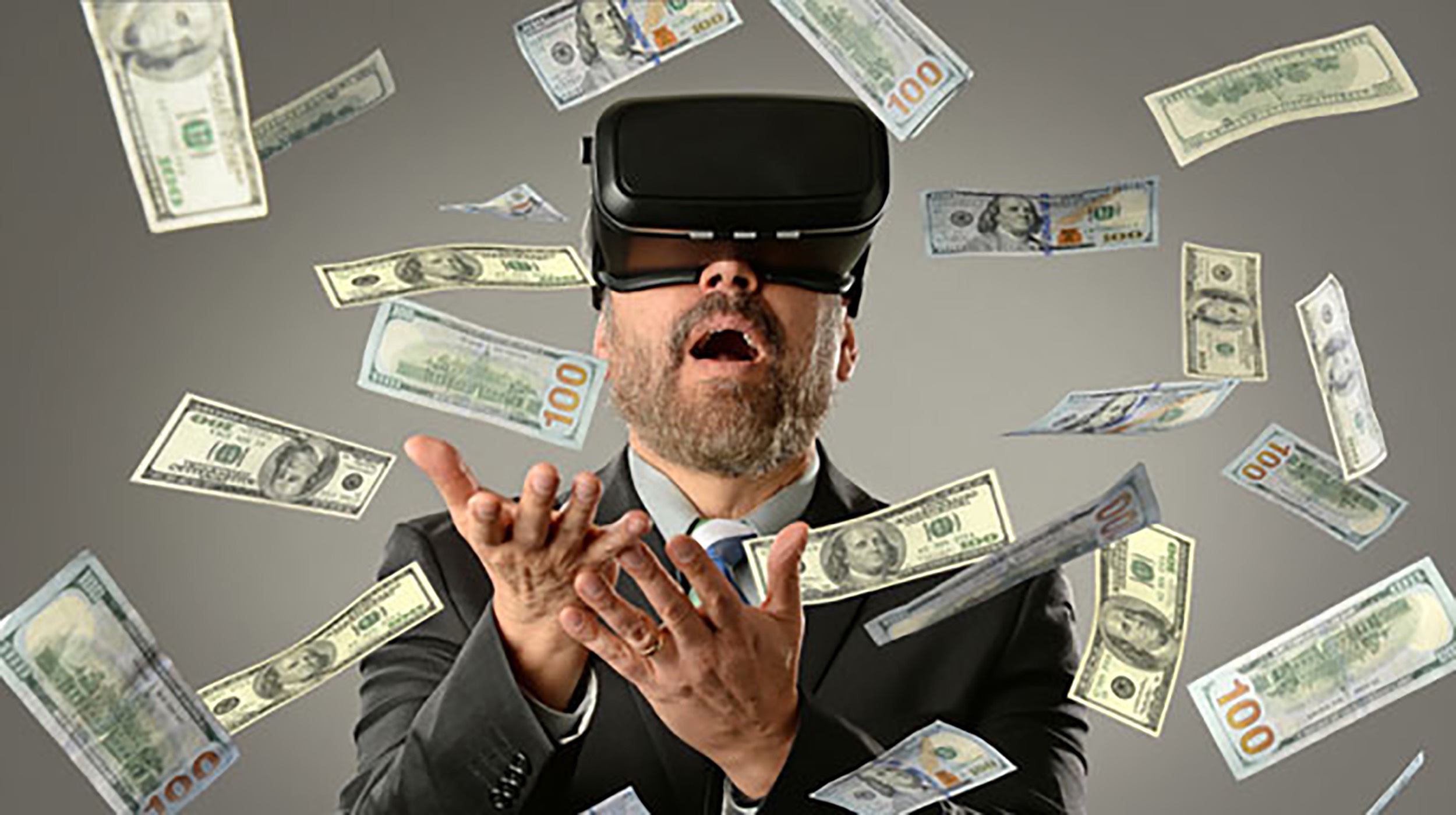
|
Please Gamble Responsibly (2021), HD Video, 16’ Doug Fishbone’s latest video work, Please Gamble Responsibly, was made for his eponymous solo exhibition at the Crawford Art Gallery in Cork, Ireland, in the summer of 2021. Originally shown inside a vast architectural model of a derelict estate in the middle of the museum, the project was conceived as a free-wheeling meditation on money and property, inspired by the phenomenon of “ghost estates” – housing developments built during the speculative Celtic Tiger boom of the Irish property market, and left unfinished when the credit bubble fueling it ground to a halt in 2008. Such ghost estates exist the world over, while the perpetually increasing unaffordability of housing is becoming equally ubiquitous. As the gap between rich and poor perpetually widens, and money, in its many new digital incarnations, becomes more and more conceptual, Fishbone puts his finger on the pulse of what is, apart from the COVID pandemic, becoming one of the greatest emergencies in the western world. And particularly in Berlin, where anti-gentrification protests are practically a daily occurrence, and where the city government’s attempts to stop speculation development are repeatedly overturned at the federal level, Please Gamble Responsibly takes on a keen resonance. “Please Gamble Responsibly examines how instability and collapse are coded into the very way modern money works – from the Nixon Shock in 1971 to the ongoing corporate bailouts of today – and unmasks a global economic system which is far dodgier than it seems. The film treats a populist and relevant subject – the unaffordability of housing in much of the Western world – from an unexpected and humorous vantage point.” – Doug Fishbone
|
Doug Fishbone (b. 1969 in New York, USA. Lives and works in London, England.) Described as a “stand-up conceptual artist”, Doug Fishbone’s work is heavily influenced by the rhythms of stand-up comedy. Fishbone examines some of the more problematic aspects of contemporary life in an amusing and disarming way, using satire and humor in his films, performances and installations to critically examine consumer culture, mass media, and the relativity of perception and context. In his video and performance practice, he uses images found online to illustrate and undermine his own confrontational monologues on contemporary media and its corollary, the underground and avant-garde. Fishbone’s conceptual practice is wide-ranging, using many different forms of popular culture in unexpected ways. He earned a BA from Amherst College in the US in 1991, and MA in Fine Art at Goldsmiths College, London in 2003, and was awarded the Beck’s Futures Prize for Student Film and Video in 2004. Selected solo exhibitions include: Tate Britain, London (2010-11), Rokeby, London (2010-11, and 2009), Gimpel Fils, London (2006) and 30,000 Bananas in Trafalgar Square (2004). Selected group exhibitions include Rude Britannia: British Comic Art, Tate Britain (2010), Busan Biennale, Busan, South Korea (2008); Laughing in a Foreign Language, Hayward Gallery (2008), London; British Art Show 6, Newcastle, Bristol, Nottingham and Manchester (2006). Fishbone’s film project Elmina (2010) was premiered at Tate Britain in 2010, and was nominated for an African Movie Academy Award in Nigeria in 2011. Other notable projects include: the Mayor of London’s Thames Festival, London, UK (2013, 2014), and the Look Again Festival, Aberdeen, Scotland (2016). He curated Doug Fishbone’s Leisure Land Golf at the 56th Venice Biennale (2015), and realised his solo project Made in China at the Dulwich Picture Gallery, London (2015). Artificial Intelligence was commissioned by Werkleitz Festival, Halle, Germany (2018); and he showed a specially commissioned video The Jewish Question in the exhibition Jews, Money, Myth at the Jewish Museum, London (2019). Fishbone teaches and performs at major international and UK venues, including: the Hayward Gallery, ICA London, the Southbank Centre, Hauser and Wirth Somerset, and the Royal Academy. Fishbone is a member of the Board of Trustees of the Yinka Shonibare Foundation, an organization which fosters international cultural exchange. |
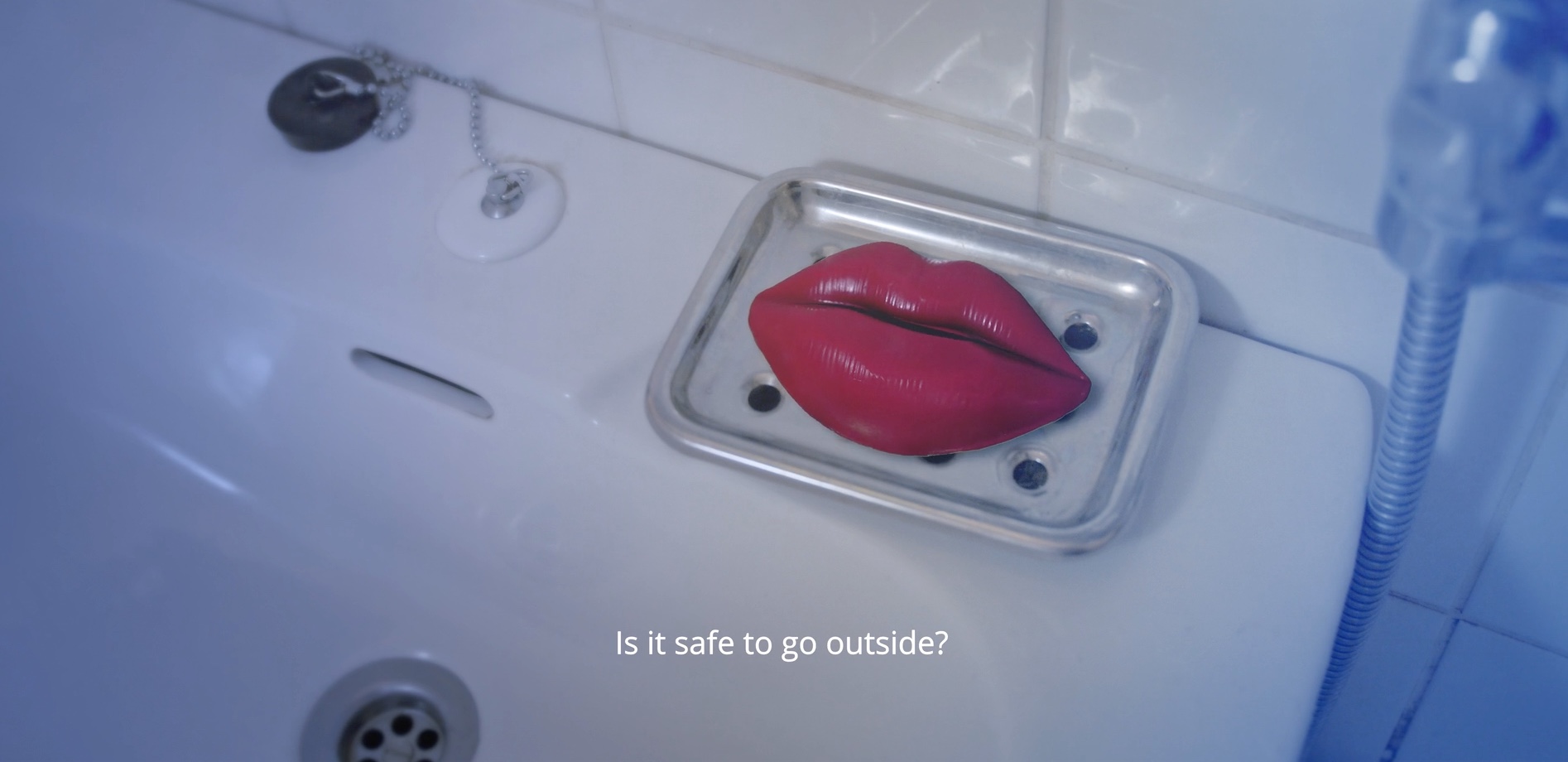
|
Daemon (2020), 4K video, 12’ “Daemon (Greek: daimon, guardian spirit) stems from reflections on the future of humankind and its relationship with nature. Karjalainen’s film navigates the ground between real and unreal, abstract and absurd as it unravels online comments of trolls criticising climate action. Running on the logic of a dream or a nightmare, the film stirs thoughts about the future of humankind. Will we be able to act as a united front in the face of a disaster or will we become paralysed, waiting for some supernatural force to step in?” – Hannu Karjalainen |
Hannu Karjalainen (b. 1978 in Finland. Lives and works in Helsinki, Finland.) Hannu Karjalainen is an award winning visual artist, filmmaker photographer, and composer based in Helsinki, Finland. Karjalainen develops his video practice from a grounding in photography and his training in the Helsinki School at Alver Alto University, Finland. Karjalainen’s experimental films, video installation work, photography and sound art have been shown in numerous exhibitions in Finland and internationally, including: UMMA University of Michigan Museum of Art, International Biennale of Photography Bogota, Scandinavia House New York, Fotogalleriet Oslo and Kiasma Museum of Contemporary Art Helsinki. Karjalainen won the main prize at the Turku Biennial in 2007, and was chosen as Finnish Young Artist of the Year in 2009. Karjalainen’s latest album LUXE was released by Berlin based Karaoke Kalk in late 2020. Karjalainen has collaborated with Simon Scott (of Slowdive), Dakota Suite and Monolyth & Cobalt among others. |
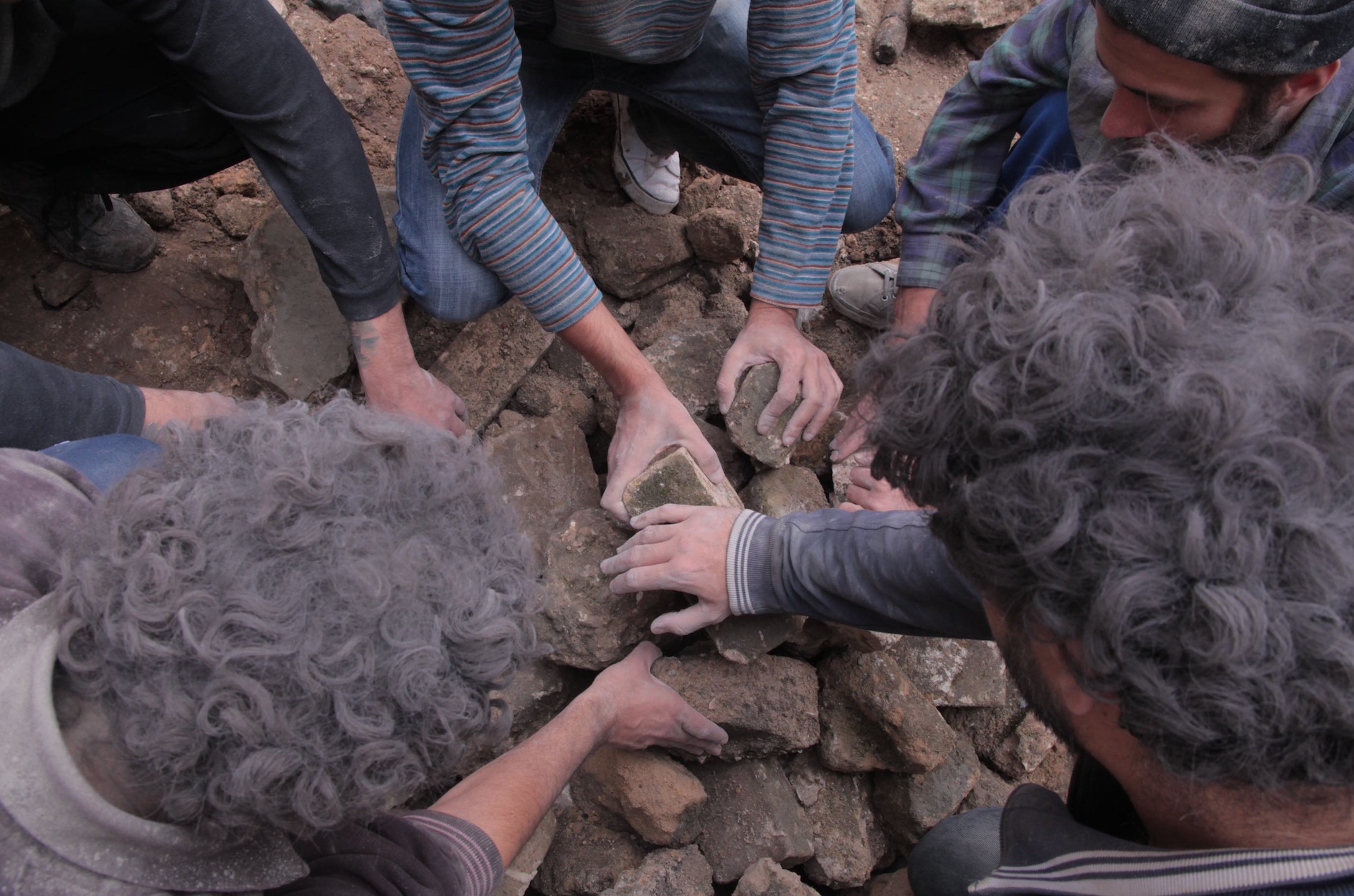
|
Dig (2020), HD Video, 5’32” “In the video Dig you can see a group of young men working hard trying to dig out heavy stones. It is not clear where this action takes place. It might be a ruin house after an earthquake or maybe this house was bombed. The men look very stressed and they keep on working and digging out the stones. The action repeats itself in a never ending loop and the beholder never knows what is the reason they are digging, or will they ever find something. This action becomes more and more familiar to the beholder as he might seen it on the news it becomes part of our life but usually it happens in a faraway place.” – Shahar Marcus |
Shahar Marcus (b. 1971 in Petach Tikva, Israel. Lives and works in Tel Aviv, Israel.) Shahar Marcus primarily works in the medium of performance and video art. His initial works dealt with the exploration of his own body and its limitations – incorporating various perishable materials, such as dough, juice and ice. His body served as an instrument, a platform on which various ‘experiments’ took place: lying on the operating table, set on fire, dressed in a ‘bread suit’, and more. His recurrent use of bread as a symbol of essentiality and survival is juxtaposed with military symbols. By frequently working with food, a perishable, momentary substance, and by turning it into a piece of clothing or a set, Marcus also flirts with art history; transforming arbitrary objects and materials into something immortal and everlasting. His most recent works deal with local political issues, by approaching iconic Israeli landmarks with a critical and humorous point of view. Marcus reflects on his own heritage, environment and the creation of local historical narratives. His works are influenced by the visual language of cinematography along with familiar themes and tributes to the history of art. Shahar Marcus studied Linguistics and History of Art at the University of Tel Aviv. He has exhibited at numerous art institutions, both in Israel and internationally, including: Tate Modern, London; The Israel Museum, Jerusalem; Tel Aviv Museum of Art; Petach Tikva Museum of Art; Copenhagen Kunsthalle; Moscow Biennale; Poznan Biennale; Moscow Museum of Modern Art; The Hermitage, Saint Petersburg; and at other art venues in Poland, Italy, Germany, Georgia, Japan, USA, and Turkey. His works are in many important museum collections, such as: The Israel Museum, Jerusalem; Tel Aviv Museum of Art; Petach Tikva Museum of Art; and others. |
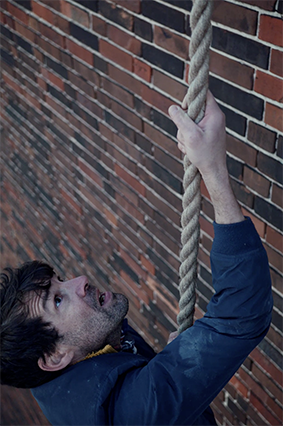
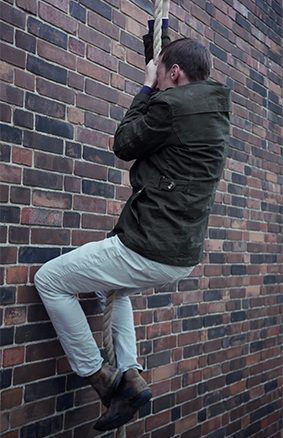
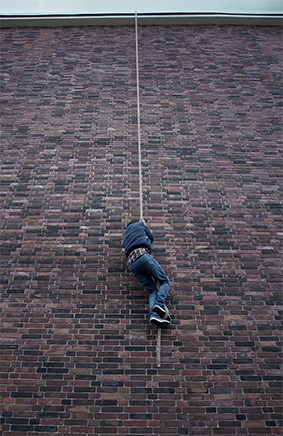
|
ZWEI (2021), video performance, 5’09”
“This installation tells the story of two men bound together in a relationship of dependence but it can also be read as a social metaphor as individuals, communities and societies have always been linked to each other by a relationship of mutual dependence, where, in a conscious or unconscious way, one person’s action has an impact on the other, even if this does not result always evident. The work consists of a vertically mounted wall monitor and shows a very high wall. From the upper edge of the wall hangs a rope that falls along both sides of the wall. A man hangs from each end of the rope. The two men do not seem to know each other’s presence, because each in his own way is busy fighting not to fall. Several meters separate them both from the ground and the top. From time to time the two men look frightened downwards and upwards, then try to climb up, without success. If one pulls the rope towards himself, the other is pulled slightly upwards.” – Christian Niccoli
|
Christian Niccoli (b. 1976 in Südtirol, Italy. Lives and works in Berlin, Germany.) Christian Niccoli’s videos and video installations have been presented internationally in museums and institutions, among others at: Kunsthaus Graz, Graz, Austria (2006); Phönix Art – Harald Falckenberg Collection, Hamburg, Germany (2002); Cinémathèque québécoise, Montreal, Canada (2015); Berlinische Galerie, Berlin, Germany (2012); Haus der Kulturen der Welt, Berlin, Germany (2009,2004); 8th Baltic Biennial of Contemporary Art, Szczecin, Poland (2009); 4th Biennial del Fin del Mundo Valparaiso, Chile (2015); Armenian Center for Contemporary Experimental Art, Yerevan, Armenia (2010); Musée de la Chasse et de la Nature, Paris, France (2015), Museion – Museum für Moderne und Zeitgenössiche Kunst, Blzano, Italy (2020); Museum Kunst der Westküste, Alkersum, Germany (2020); Alfred Ehrhard Stiftung, Berlin (2021). Christian Niccoli’s works are in several public collections, including; the Museum of Contemporary Art in Szczecin, Poland; Kunstsammlung der Autonomen Provinz Südtirol, Italy; Collezione Farnesina – Ministero degli Affari Esteri, Rome, Italy; and Museion – Museum of Modern and Conemporary Art, Bolzano, Italy. Niccoli’s works have been presented at several festivals, including: Transmediale, Berlin, Germany (2009); Hamburg Short Film Festival, Hamburg, Germany (2008); Oblíqua – International Exhibition of Video Art & Experimental Cinema, Lisbon, Portugal (2016); 16th WRO Media Art Biennale, Wroclaw, Poland (2015); Stuttgarter Filmwinter, Stuttgart, Germany (2015); Athens Digital Arts Festival, Athens, Greece (2015); Facade Video Festival Plovdiv, Bulgaria (2014); and Video Art Festival Miden, Kalamata, Greece (2014). In 2006 Christian Niccoli was an artist in residence at Cittadellarte – Fondazione Pistoletto in Biella, Italy, and in 2008-09 he participated in the International Studio Program at Künstlerhaus Bethanien in Berlin, Germany. |
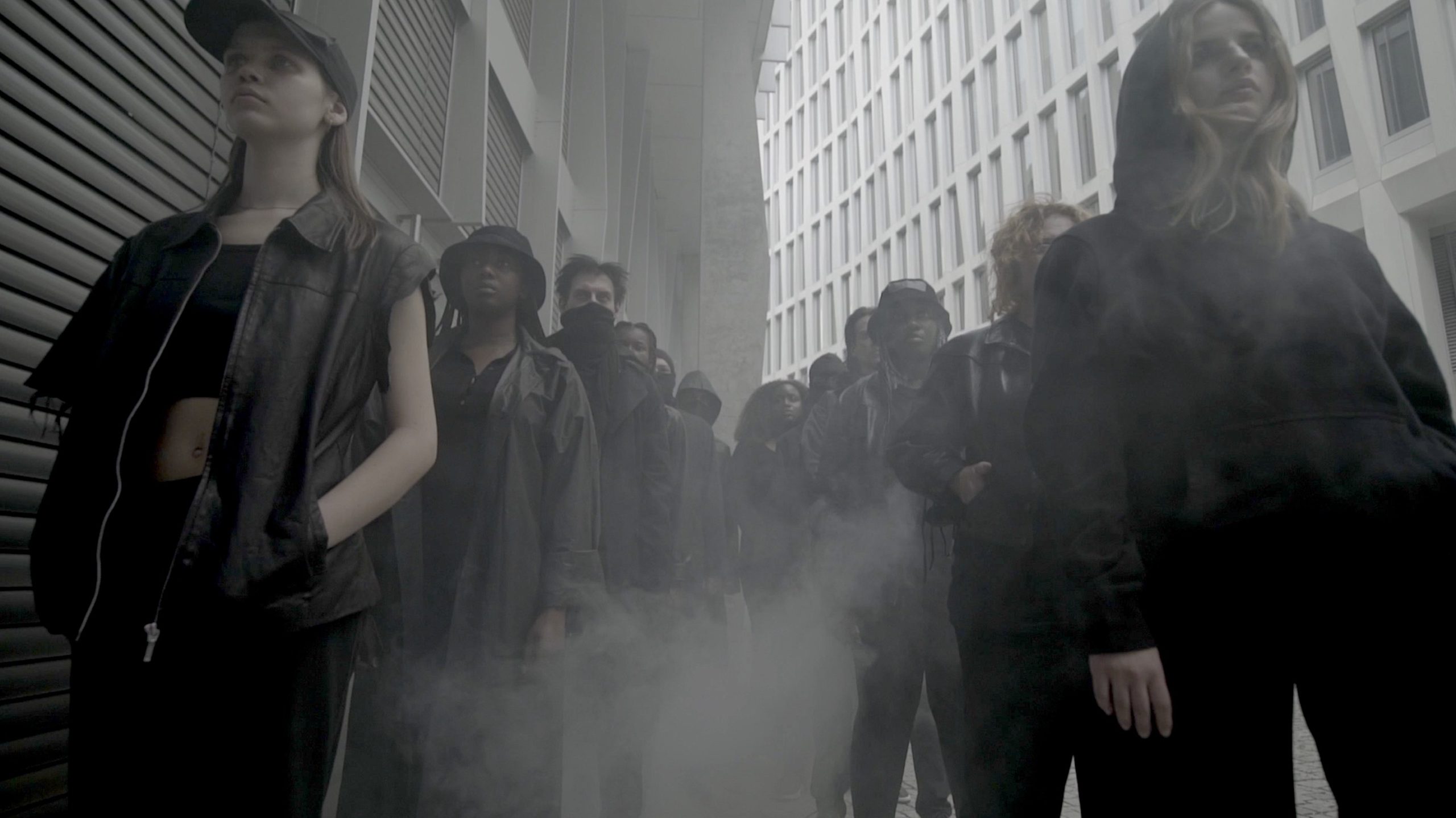
|
H A Z E C I T Y (2021), HD video, 32’57” The video work H A Z E C I T Y refers to the current discussion of climate change and what might happen in the coming years. The film raises the question: To what extent is it legitimate to use violence to force a necessary shift to prevent irreversible climate change? The philosopher Slovoj Zizek predicts that due to the shortness of time left, a radicalization of environmental activism is going to happen. Other references in the video include theories of Swedish environmental scientist Andreas Malm and environmental activist Greta Thunberg, both of whom point to the urgency of changing society by 2030. H A Z E C I T Y deals with the act of resistance in general and with the unbroken fighting spirit of political activists all over the world. The film points to historical sources for example to the German 68 movement and the American Weather Underground movement. The story of the video H A Z E C I T Y is set in the year 2027. A toxic fog often appears due to extreme pollution in cities. Fridays for Future and Extinction Rebellion are still fighting climate change. Progress has been made by corporations and politics, electric cars are mandatory, but they are basically small diversions to avoid having to make fundamental changes. Activists are increasingly frustrated that everything will stay the same. The film heroine Leocadia Haze is a lawyer who represents environmental activists in court. She stands behind the activists’ demands for a basic right to an unspoiled environment in the future. The activists are concerned with the year 2030. Something has to change fundamentally, otherwise there won’t be a “point of return” any longer. Through Leocadia’s work as a lawyer, she is committed to the law without the use of violence, but she sees the dilemma that the 68 movement already went through with the radicalization of the RAF in Germany and the Weather Underground in the US. During the night, Leocadia is out in the city looking for her little sister Nikita, who has allegedly gone into hiding. Nikita has joined a radical environmental organization that threatens violence to achieve its goals. It remains unclear whether Nikita is responsible for the fire at a corporate headquarter causing human casualties. Has Nikita become a murderer? While driving through the city at night, Leocadia has flashbacks and visions. She suffers from insomnia and a mysterious nosebleed illness caused by the city’s smog. Leocadia has a dark secret. To calm herself down, she goes swimming at night. |
Nina E. Schönefeld (b. 1972 in Berlin, Germany. Lives and works in Berlin, Germany.) Nina E. Schönefeld is a multidisciplinary artist who studied Fine Art in Berlin at the Universität der Künste, and in London at the Royal College of Art. She holds a Master of Arts and a PhD in Art Theory. For several years she has been lecturing at private art colleges in the field of visual arts. She is the co-founder of “Last Night In Berlin”, a blog and cultural project documenting art openings in Berlin. In her art practice, Schönefeld’s strong interest in new artistic developments has resulted in interdisciplinary video installations – an overall system of light sources (lamps, movement detectors etc.), sound systems (mixers etc.), electronic machines, computer screens, newly built sculptures, interiors and video projections. The focus of Schönefeld’s diverse practice lies on political, social and digital changes in society, phenomena of abrupt shift, escape from political persecution, hacking attacks, nuclear accidents, dictatorships, freedom of speech and a free press, people who are radically different, the lives of hackers and preppers, political activists, investigative journalists, environmental activists, Wikileaks members, NSA employees, data martyrs, political underdogs, hermits, computer gamefanatics, cult members, extremists, the Darknet, Julien Assange, Edward Snowden, the blackout in NY, Chernobyl and Fukushima, the control center of the CIA, the Chaos Computer Club, North Korea, the right wing movement, Children of God, Suprematism, the Bauhaus, Zero, insular colonies, digital inventions and radical social networks. Schönefeld’s work has been featured in numerous exhibitions around the world. Recent exhibitions include: “Roppongi Art Night”, Tokyo, Japan (2021); “Am Limit”, Cole mine Důl Michal, Ostrava, Czech Republic (2021); “Facing New Challenges: Water”, Heidelberger Kunstverein, Heidelberg, Germany (2020); “#Payetonconfinement”, Galerie la Pierre Large, Strasbourg, France (2020); “Topographies of The Stack”, Alternative Culture Making Art Space, Shenzhen, China (2019); “Water(Proof)”, Federation Square, Melbourne, Australia (2019) & MOMENTUM, Berlin, Germany (2019); “Anima Mundi Festival 2019 – Consciousness”, Palazzo Ca’ Zanardi, Venice, Italy (2019); “30 Jahre. 30 Fragen. 30 Stunden.”, Goethe Institut – Beijing, China (2018); “Join the Dots / Unire le distanze Salone Degli Incanti”, Ex Pescheria Centrale, Trieste, Italy (2018); “Light Year 25”, Manhattan Bridge / Kuelbs Collection, NY, USA (2017); and many others. |
Click HERE to see the prequel to STATES of EMERGENCY on ikonoTV > >
![]()
SUPPORTED BY:
 |
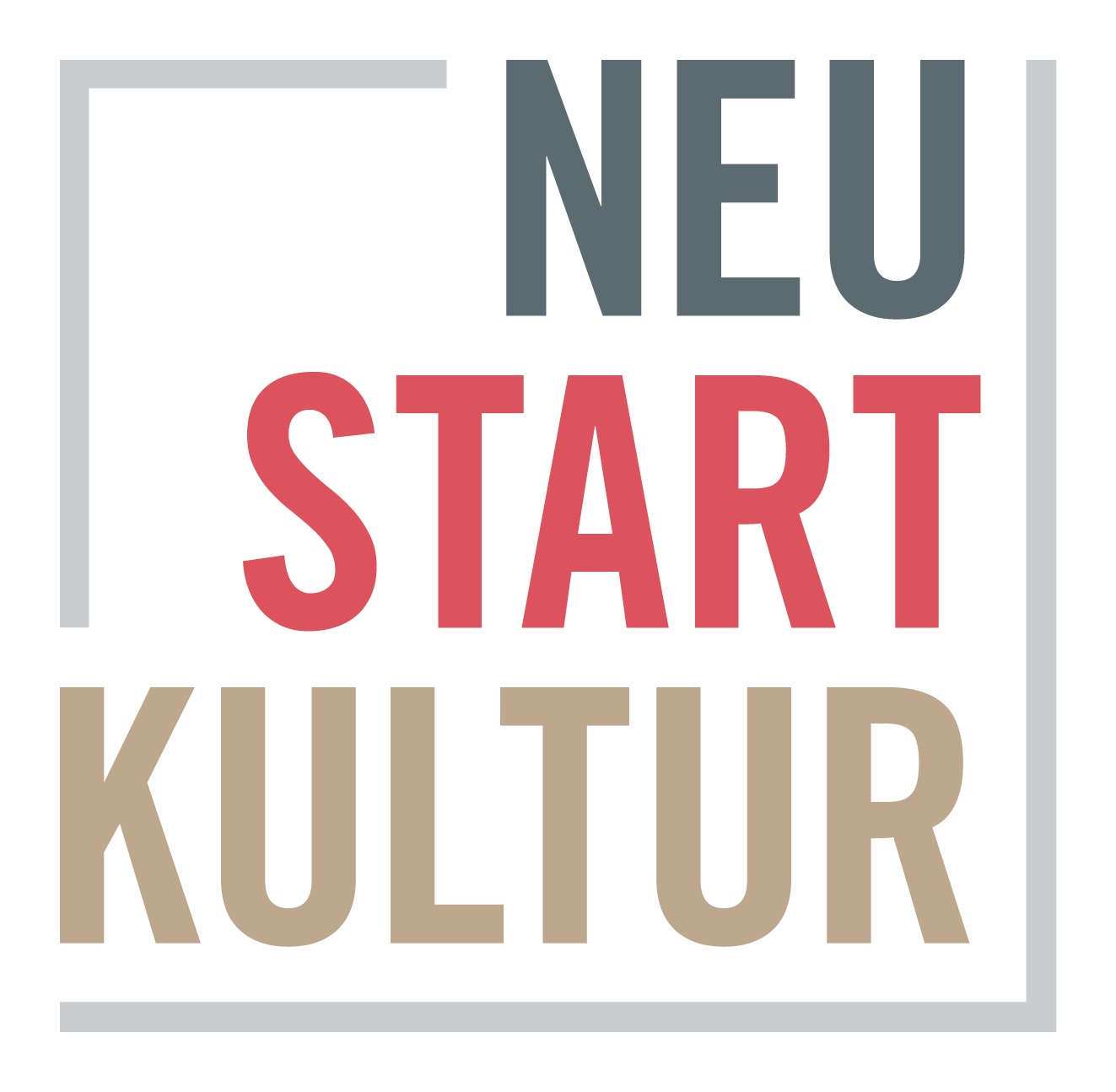 |
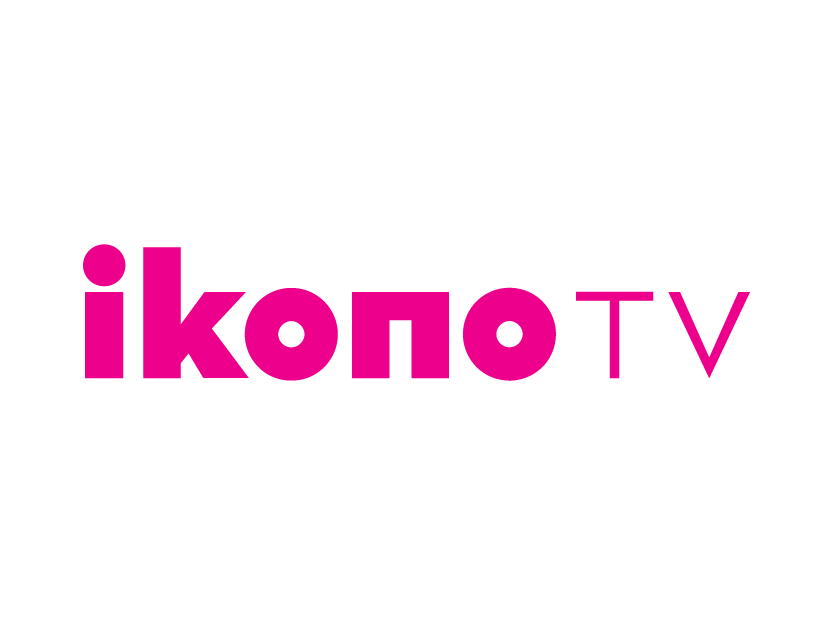 |


 Back to Homepage
Back to Homepage
